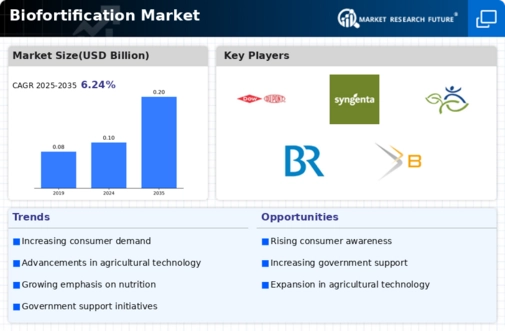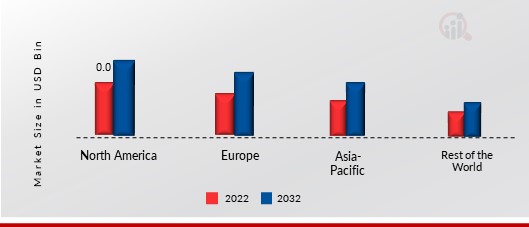Market Analysis
In-depth Analysis of Biofortification Market Industry Landscape
biofortification market is a vital sector focused on enhancing the nutritional quality of crops through breeding, biotechnology, and agronomic practices. Market dynamics within this industry are influenced by various factors, including food security concerns, nutritional deficiencies, technological advancements, and consumer awareness.
One of the primary drivers shaping market dynamics in the biofortification industry is the persistent challenge of malnutrition and hidden hunger. Despite global food production increases, millions of people, particularly in developing countries, suffer from nutrient deficiencies due to inadequate access to diverse and nutritious foods. Biofortification offers a sustainable and cost-effective solution to address this issue by enriching staple crops, such as rice, wheat, maize, and beans, with essential vitamins and minerals, including iron, zinc, vitamin A, and folate. These enhanced crops provide a nutritional safety net, especially for vulnerable populations reliant on staple foods for their daily diet.
Technological advancements play a crucial role in driving market dynamics within the biofortification sector. Innovations in plant breeding techniques, genetic engineering, and molecular biology enable the development of biofortified crop varieties with enhanced nutritional profiles. Breeding programs focus on selecting high-yielding varieties with improved nutritional traits, such as increased nutrient content, bioavailability, and agronomic performance. Biotechnological approaches, including genetic modification and gene editing, offer precise and targeted methods for introducing desired traits into crops, accelerating the development of biofortified varieties.
Consumer awareness and demand for nutritious and functional foods also influence market dynamics within the biofortification industry. As consumers become more health-conscious and seek out foods with added nutritional benefits, there is a growing interest in biofortified crops and products. Biofortified foods offer a convenient and sustainable way to address nutrient deficiencies and improve public health outcomes. Moreover, awareness campaigns, educational initiatives, and partnerships with governments, NGOs, and international organizations raise awareness about the importance of biofortification and promote its adoption among farmers and consumers.
Market dynamics within the biofortification industry are further influenced by factors such as regulatory frameworks, policy incentives, and investment trends. Government policies and programs, such as biofortification initiatives, food fortification mandates, and nutrition-sensitive agriculture strategies, create a conducive environment for the adoption and scaling up of biofortified crops. Regulatory approvals and safety assessments ensure the integrity and quality of biofortified products, enhancing consumer confidence and market acceptance. Furthermore, private sector investments, philanthropic funding, and public-private partnerships drive research and development efforts, commercialization, and market expansion of biofortified crops.
Supply chain complexities and market dynamics are closely intertwined within the biofortification industry. The global nature of supply chains, seed systems, and agricultural markets can affect the availability, distribution, and adoption of biofortified crops. Effective seed production, distribution networks, extension services, and market linkages are essential for scaling up biofortification efforts and reaching target populations. Furthermore, collaborations between seed companies, farmers' organizations, research institutions, and development agencies facilitate technology transfer, capacity building, and knowledge sharing, driving the uptake of biofortified crops across diverse agroecological zones and socio-economic contexts.
In conclusion, the biofortification market is characterized by dynamic forces driven by food security concerns, technological advancements, consumer awareness, and regulatory frameworks. As the global population continues to grow and malnutrition persists, the demand for nutritious and biofortified crops is expected to increase. Innovation, collaboration, and investment will play key roles in shaping market dynamics and driving the future growth of the biofortification industry, ultimately contributing to improved nutrition, health, and well-being for millions of people worldwide.









Leave a Comment